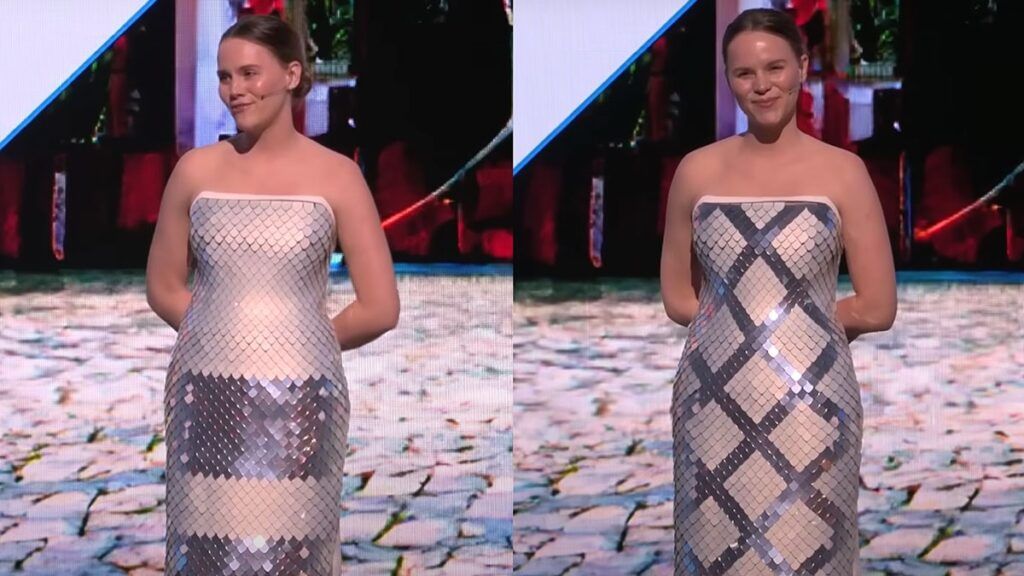
Underlying its foray into fashion is a bid to introduce what Miller calls a “new canvas” for Adobe software. “Because it didn’t exist, it was necessary to invent it,” he says. “But now we have, we’re hoping that the industry embraces this at scale so that we can do our main task, which is building great design tools and software and content.” Will the industry buy in?
Beyond marketing?
Some online commenters were impressed with the tech but called the dress “ugly” or pointed out that the shifting petals only appear on the front, while the back is plain. One wrote: “It’s giving Hunger Games”, in a nod to the outlandish outfits worn by those in the Capitol. Others defended the dress as a proof of concept.
Madison Maxey, founder and chief innovation officer of New York-based Loomia, was impressed with the technology. “I think the dress is beautifully done,” she says. “I’m excited to see an electrical engineer and computer scientist at the reins of this prototype. I was impressed with how natural and smooth the animations were.”
Albert Ayal, who runs the account @UpNextDesigner on Instagram that spotlights emerging designers, was also impressed. “I think for bigger fashion companies, it would be a good — and smart — investment,” he says. “Designers will be able to cut down the design process, which consists of multiple drafts and a lot of back and forth. It will help with the creative process and also give more freedom to experiment with different designs and ideas.”
Taylor, however, is unconvinced that it’ll be good for designers. “The sequins are large, which makes it difficult to create patterns of interest and detail,” she says. “The fashion industry is already struggling with price and getting people to pay for something. Are we really likely to see designers being paid fairly for each new pattern they make? Like most commercialised inventions, it will probably dilute the income of the designer pretty quickly.”
She also flags sustainability and useability concerns. “If they’d done something using conductive yarns, that would have been interesting, but they decided to go with something that will catch on jewellery, loose threads, zips on over garments, etc.,” she says. ”It’s lacking a repair element, the longevity of it looking new. All the things we know fashion needs to do in order to reduce its impact.”
Whether or not the dress can go beyond a marketing moment comes down to economics, Maxey says, asking the following: Can it be mass-produced at an affordable price? Can it be used reliably? Will consumers adopt it? It’s too soon to say, she says.
For the Adobe team, the major reaction has driven them to want to innovate in two streams: to figure out a practical version for people to be able to use and to develop colour capabilities. But from the sound of it, these innovations are a way off. “It’s very, very early days,” Miller flags.
And if it can’t scale? “Projects like this are crucial for inspiring people and driving vision,” Maxey says. “I think it’s also OK if it’s just a social media moment that reminds everyone how cool these materials can be.”
Comments, questions or feedback? Email us at [email protected].
More from this author:
How much would social media users pay to avoid ads?
The return of Mansur Gavriel
Birkenstock shares drop 11% in NYSE debut

